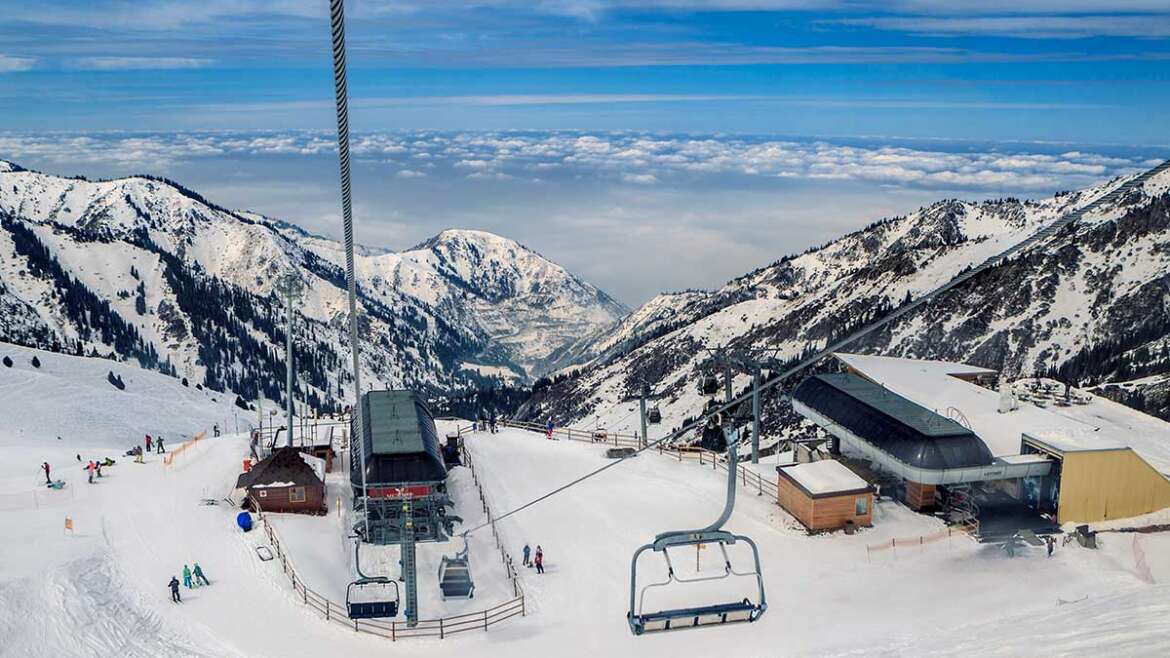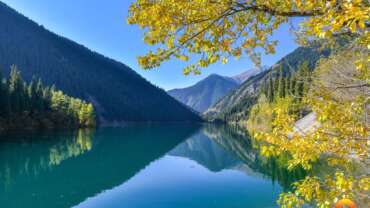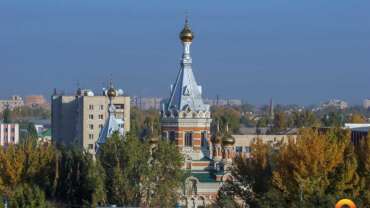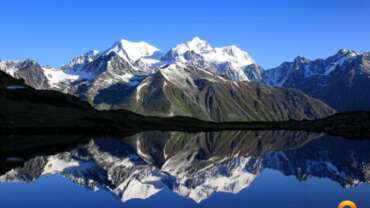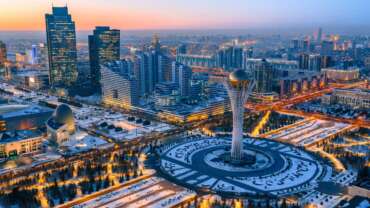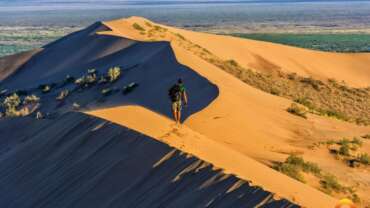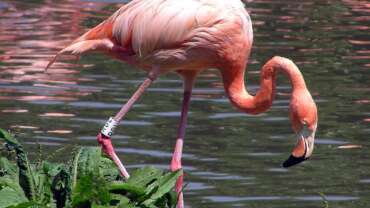Cities in Kazakhstan
Nur-Sultan (Astana)
Named as the ‘Singapore of the steppes’ by Lonely Planet, Nur-Sultan is the first introduction to Kazakhstan for many travelers. The world’s youngest capital, formerly known as Astana, it has already reinvented itself as one of the most innovative cities. Nur-Sultan is constantly changing and rapidly expanding: new buildings appear every year and every time you visit, the city may seem quite different from what you remember from the last time.
Almaty
Almaty is one the most beautiful cities at the foot of the emerald Tien Shan ridges and is called a “garden city”. In spring, when the southern outskirts are buried in blossom of apple, apricot, and cherry gardens, the city becomes a fabulous sight. Its magnificent green attire and the grand panorama of the mountains distinguish Almaty from other cities.
Exotic Almaty tourism is something that the traveler within one day can become a witness of the five climatic zones. Follow the path from the hot desert to the eternal snows. The natural complex of this region contributes to the prosperity of the various kinds of tourism.
The city is located in the heart of the Eurasian continent, in the south-east of Kazakhstan, at the foot of the Tien Shan mountains at an elevation of 700 to 1100 meters above sea level.
The climate of the city is is sharply continental, with large temperature fluctuations, not only within a year, but during the days.
Almaty is located in the most blessed place in Kazakhstan, i.e. one of the most climatically balanced places in Central Asia, despiteits sharply continental climate.
There are a lot of unique places near Almaty – from the peak of Khan Tengri and snowy trails of Shymbulak to the Silk Road routes.
The town is buried in the green: 10 000 hectares of its territory are occupied by parks, trees, parks and gardens. The central streets and avenues slipping down from south to north, taking the example of three mountain streams – Esentay, Large and Small Almatinka that rush down, feeding aryk and fountains, fields and gardens.
Almaty is great in the evenings and at nights, straight rows of colorful lights, sparkling beads of golden, white, orange lights… The lights of shop windows, cafes, restaurants, entertainment centers are lit until dawn. Garden-city, a bright flower in the foothills of Alatau is considered one of the most beautiful cities of Central Asia. Almaty residents are sure that their city is the one of the best cities in the world.
Aktau
In 1963, the settlement of Aktau received town status. The city is a major oil and gas production center, and is known for its unique heated oil pipeline. Galleries of petroglyphs from the age of nomads (10th-2nd centuries B.C.) have been found on great mounds in the heart of the peninsula, as well as a necropolis with grave markers decorated with complex ornamentation. Two ancient underground mosques, built a thousand years ago, were discovered near Ungazy mountain. The most interesting of these two is Shahbagota mosque, because though Islam banned the portrayal of people or their body parts, on the walls of this mosque, surrounded by lotus blossoms, is a painting of a man’s palm.
The population of Aktau is around 175,000. It is one of the most prosperous towns in this part of Kazakhstan, built in the 1960s on Mangyshlak peninsula. It is the center of the Kazakh oil and gas industry and a Caspian seaport. The only nuclear power station in the country was built not far from Aktau, which also famously powers the city’s desalination plant. Some interesting places: underground mosques (10th-12th c.), necropolis (9th-19th c.) on the territory of which there are many stone statues, Beket-Ata necropolis, mausoleums, excavations of Kuskuduk (an ancient settlement on the territory of Kazakhstan), the territory of the ancient town of Kzyl-Kalda (10th-12th c.), the town of Fort Shevchenko (construction began in the 18th c.), Karagie hollow, 132m below sea level and the 3rd deepest depression in the world, Mangystau desert, and of course the Caspian Sea.
Aktobe – a city on a Great Silk Way
Aktobe is one of the prospering regions of the Republic Kazakhstan, which has huge economic, cultural and tourist strength. The advantage of the area is that it has an advantageous geographical position, being on at the joint of Europe and Asia.
Caravans of a great Silk way passed through this earth, connecting cities and the countries. Lines of highways cross throughout an up-to-date map of area, largest of which is a global transport corridor «the Western Europe – the Western China». Railroad lines last in all directions, both in European, and Asian parts of the Euroasian continent. The sky covers a network of the international airways. Almost all airlines of the world use the services of the up-to-date regional air navigation dispatch centre. Modern international airport “Aktobe” is capable to accept aircrafts of all types. Throughput of terminals makes more than thousand passengers at an o’clock. Region’s climate is sharp-continental. Long winter with a steady snow covers, frosty and the sunny days attract you to ski walks, driving on sledge, winter hunting and sub glacial fishing.
Summer is hot with torrential rains, mushrooms and berries. In the spring steppes open spaces blossom snowdrops and tulips, poppies and cornflowers. The autumn comes in the crimson dress with gold locks of hair, reminding Pushkin’s «feast for the eyes». The total area of the region is 300 sq. km. One of the unique nature sanctuaries of the land is the meteoric crater Zhamanshin also found in territory of area. The crater has been formed 700 thousand years ago as a result of falling to the Earth a large meteorite; at various times repeated geologo-geographical researches here were conducted.
It is possible to name a Yurta as a masterpiece of an applied art of the Kazakh people; it’s the dwelling of the nomad tribes which have remained till our times. The ancient traditions connected with ethnic history, social and environmental conditions are reflected in national suits of Kazakhs, jewellery ornaments. The population of the Aktobe region makes more than 700 thousand persons. There live almost hundred nationalities and nations. The regional Nation Assembly of Kazakhstan counts 15 national-cultural centres which participate in all mass events by showing customs and traditions of its nations, and also promoting cross-cultural interaction.
The administrative centre of the region is Aktobe city, which was based on the place of a fortress of Ak tobe (the White hill) in 1869. It is a green modern megacity with its sights, sculptures and the monuments, which displays land’s history. The centres of religious culture are a mosque and the orthodox cathedral, connected unusual beauty water-green parkway with a singing fountain and the small architectural forms executed in national style became original cards of the city. Modern trading-entertaining complexes with the huge children’s playgrounds, an ice skating rink, cinemas, bowling, rock-climbing wall. The traditional horse and camel jumps accompanying by mass celebratory events involve tourists. Let’s add that our city will be remembered by comfort and luxury to tourists and visitors.
Modern luxurious hotels from 3 to 5 stars, restaurants with refined dishes of the Kazakh, Russian, Armenian, Korean, Chinese and Italian kitchens also are a tourism infrastructure integral part. Services for all tastes, the interesting, sated leisure waits for everyone who will visit this surprising, warmly welcoming land.
Atyrau
The city of Atyrau, located in the stern, but at their beautiful part of the planet Earth, namely, in the Caspian lowland, in the mouth of the confluence of the Ural River in the Caspian Sea. Geographically, the city of Atyrau, located in western Kazakhstan and is the regional center of Atyrau region.
The city is located on both sides of the Ural River. The history of the area and the city has for many centuries. The first mention found in the III – IV centuries BC, and the city begins its chronicle in 1640.
The land is harsh, but generous. The Caspian Sea and Ural River is rich in fish and the depths of the oil. And so the main richness red fish and black caviar, oil and gas. No wonder the crest of the city of sturgeon and oil derrick.
Today Atyrau – the main hydrocarbon region of Kazakhstan, the largest center for oil and gas, a promising market investments. Well, black caviar from Atyrau well-known in the CIS and Europe.
History of the region, consisting of the Millennium, knows a lot of events and dates, all included in the chronicle of her life, knows many national heroes, whose names are sacred is revered and remembered by the people.
In 1991 Gurievskaya region was renamed in Atyrau, the regional center Guriev – in the city of Atyrau.
The city of Karaganda
The city of Karaganda is an industrial center, an important railway and air routes, the city of high science and culture, a lively point of many tourist routes. The city was founded on February 10, 1934. In economic, scientific and cultural potential of Karaganda takes one of the leading places in Kazakhstan, which has 471.8 thousand people and representatives of more than 113 nationalities. The territory of the city is 497.8 square kilometers. In Karaganda coal mining, machine building, metalworking and food industries are enterprised. In the city there are a large number of enterprises of transport and communications. It is believed that the city got its name from the common in these places bush Karagan (yellow acacia).
Even in the XIX century on а place of the city was nothing. Legend says that in 1833 a shepherd boy Appak Baizhanov found coal. At the end of XIX century the production of coal, begun from Russian merchants, then the French and British entrepreneurs. Cultural life of the city is an interesting and diverse. In the town of connoisseurs of art are waiting for the concert hall “Shalkyma”, where recitals of classical music are the composers, conductors and musicians.
Also, residents and visitors welcome to Kazakh Drama Theatre after name S.Seyfullin, Russian Drama Theatre after name K.Stanislavskii and Academic Theater of Musical Comedy, Karaganda Regional History Museum has in its fund of 134 810 exhibits. The Karaganda Regional Museum of Arts, Karaganda Ecological Museum, which are specialized in the preservation and development of ecological culture. Within the city there are about 50 monuments of history and culture: Culture Palace of the miners, Sports Palace named after N.Abdirov, hotel “Chaika”, the circus, monuments for Bukhar zhyrau, G.Mustafin, A.Baizhanov “Miner’s Glory”, military glory monument “Eternal Flame”, architectural memorial ensemble in honor of the war-Karaganda, who died in Afghanistan, and others.
Kostanay City
City of Kostanay was founded in 1879. At the beginning of XX century the city was a major trading center and was one of the important parts of the path connecting Asia and Russia. At the time, Kostanay city was a big fair, two-story wooden house, the air was dust and the streets were covered with sand. Despite this, a Swiss citizen Lorets (Lorez) has built the largest in the Southern Urals and on the territory of Kazakhstan plant production capacity of beer, which flowed in a specially branded bottles produced, in those days was uncommon. In 1950 the population of the city and the area has increased markedly in connection with the development of virgin lands. In the postwar period to date in the Kostanai region continue to meet the huge harvests of cereal crops. On the eastern edge of town, on the part of the Tobol River was established label with a five-meter numbers like this: “385 thousand tons of grain, where the number of tons updated every week.
Kyzylorda
The territory of the city is 2,4 thousand sq. m.
Population is 200.9 thousand people.
In 1818 was founded the fortress Akmechet by Kokand Khanate after the conquest of the shores of the lower flows of Syrdarya River to Karmakchi. The fortress was built by more than 10 thousand Kazakhs from surrounding villages. It is based on the nodal point of the caravan road from Bukhara and Khiva in central and northern Kazakhstan and from East to West.
In 1853 Kokand fortress Akmechet was conquered by the Orenburg governor-general V.A. Perovsky. The fortress was renamed by the Decree of the King on August 31 the same year in Fort Perovski. In 1867, due to creation of Turkenstan General Government was created Syrdarya region consisting of five counties. Centre of Perovski County became Perovski fort, which became the city Perovsk. In 1901, was started the construction of Orenburg-Tashkent railway, that passed through Perovsk, which led to a sharp increase in the number of the population of the city. Construction of the railway was finished in 1906. The locomotive and wagon depots, servicing the railroad industry appeared.
After the construction of the railroad city’s population had increased to 8328 people. In 1922 the city Perovsk was renamed Akmechet. On April 17, 1925 at the V Congress of Soviets of the Kirghiz SSR Akmechet city became capital of the Republic and was renamed Kyzyl-Orda. At the same congress, the people got their historical name of “Kazakh”, and the Republic – The Kazakh SSR. The population of the city was 22,577 people. Since 1931 Kyzylorda was the district center, and from 15 January 1938 is the regional center.
In 1940, started the construction of Kyzylorda dam, which was completed in 1958. In 1958-1959 was completed construction of a shoe factory. In 1964 CHP-6 began its work. It emerged on the basis of two power stations, which worked in 1958-1962. In 1963 began the construction of meat processing plant, completed in 1966. In 1974, on the basis of machine-testing station was set up factory “Kyzylordarismash”.
Ust-Kamenogorsk
Ust-Kamenogorsk city was founded as a Russian fort in 1720. Ust-Kamenogorsk later became a center of trade with Mongolia and China and the gateway to the mineral wealth of the Rudny Altay mountains.
Ust-Kamenogorsk city is now Kazakhstan major center of nonferrous metallurgy (lead, zinc, titanium, and magnesium) with important associated research institutes and laboratories.
Other industries of Ust-Kamenogorsk city include food processing and machine building. Ust-Kamenogorsk city is also an important transport junction.
There are teacher-training, construction and road-building institutes, as well as various technical colleges in Ust-Kamenogorsk city of Kazakhstan. A large hydroelectric station lies upstream on Irtysh river.
PAVLODAR CITY
Pavlodar city is ancient city was appeared in the beginning 18 centuries as one of the advanced posts of Irtysh of a military line.
The national legends informed us that before XVIII century on the place where Pavlodar city is located the nomadic generations including for Kazakh people established the yurts in the summer time. But the yurt, s settlement had not the name and they were not on the map. Probably, so the landscape looked, when in 1720 on a place modern Pavlodar kaxaki have based an advanced post Koryakowsk as one of parts of a line. ” … This advanced post all other on Irtysh is more multicrowded, has best there structure. High and open there steppe, on which the advanced post lays, the valley with pleasant islands, taking place on the river, gives to his rule still large pleasantly … “, – the traveller P.S. Pallas in 1770 years.
In 1861 under the initiative of local merchants stanica is erected in a rank of city, to which the name Pavlodar is appropriated in honour of newborn prince Pavel. Convenient site of city, presence of quay, industrial production salt – all this has resulted in fast growth of city. The large development was got with trade with steppe. The merchants, occupied the city, was given to it with new shape, has appeared much rich of wooden houses, churches, mosque. These buildings till now decorate an old part of city Pavlodar.
Approximately in 100 years after reception of the status of city within development of a virgin soil Pavlodar has gone through the fastest development. The transformation of city into an industrial centre is connected to construction in Pavlodar of a Tractor and Aluminium factory. Today Pavlodar is the centre of the Pavlodar area, one of the basic industrial centres of Kazakhstan.
To the beginning 20 centuries Pavlodar became one of the biggest cities on Irtysh. Pavlodar is modern industrial and cultural city. Аre the oldest houses in Siberian “merchant” style neighborhood with modern buildings. Modern Pavlodar was stretched during 16 kms, on a coast Irtysh, which forms western border of city and defines his character. The green quay Irtysh involves the inhabitants and visitors of city. If from here to look at west, as far as the eye only steppe, infinite sky and Irtysh with abrupt wild slopes suffices.
Pavlodar is one of the largest industrial centres of Kazakhstan: here there are enterprises with a various branch orientation, processing of petroleum, mechanical engineering, construction, power, chemical industry and metallurgy. Besides about аbout 7000 enterprises of small and average business make foodstuff and consumer goods. Since 2003 the cargo shipping company on Irtysh is renewed. In spite of the fact that in Pavlodar there are no representations of the international companies many from the Pavlodar firms have long-term of the attitude with the enterprises of Germany. For example, Aluminium factory or joint-stock company “Dew”.
PETROPAVLOVSK
The administrative centre of the North Kazakhstan area is the city of Petropavlovsk, which claims its lineal descent since 1752, as St Peter’s fortress, the major outpost on of the Presno-Gorkovskaya line of outposts. The necessity for bread and fodder promoted peasants settling round the fortress. Soldiers and dragoons had the right to build their own houses outside the fortress. The foothills were the most convenient place for this purpose. Streets gradually grew there, restricting to the river. For the purpose of safety the suburb was enclosed by fencing. An entry and an exit were protected by special sentries.
In 1759 the first school for soldier’s children was opened in fortress. The first coat of arms was confirmed on September 7, 1842. The image of a camel in a silver field on the hill, loaded with two bales and led by caravaneer is shown on it. In 19th century, keeping its strategic value, the city turned into the centre of trade and economic relations and spiritual contacts of the Kazakh and Russian people. After a Great fire on May 2, 1849, which exterminated 450 houses, the new building of Petropavlovsk began in its upland. The resettlement of peasants from the European part of Russia and the building of the Siberian railway promoted the development of the city.
An agricultural production delivery to the Russian and European markets started. The oil went from Petropavlovsk to St.Petersburg, Moscow, Riga, Odessa, Samara, Vladivostok, and also to England, Germany and Denmark. Large enterprises appeared – a skinnery of Zenkov brothers, cattle-breeding raw materials processing plant of Swiss Akkola. Eventually the city became not only administrative, but also cultural city. Petropavlovsk is the native land of classics of the Kazakh literature: Sabit Mukanov, Gabit Musrepov, Magzhan Zhumabaev and Ivan Shuhov. Peter Ershov, the author of a world famous fairy tale “The Little Humpbacked Horse”, has spent his childhood in St. Peter and Paul fortress; Nikolay Tchizhov, a poet-Decembrist, lived in exile there, Sergey Durov, Feodor Dostoevsky’s friend, a poet-petrashevets, served there; Yaroslav Gashek, the Czech writer, did an international work in days of Kolchak exemption; Pavel Vasilev, a bright original poet, studied there; an outstanding writers Vsevolod Ivanov and Sergey Markov made their first steps in the literature; a well-known fiction writer Alexander Kazantsev lived in the city.
The life paths of poet Bajmagambet Ztulin and a talented translator George Tvertin held there, an outstanding Kazakh educator and democrat Shokan Ualihanov wrote F.M.Dostoevsky letters from Petropavlovsk. Tleuke Kupenin, a native of North Kazakhstan oblast, known as Shal Akin, played a major role in the Kazakh literature. Moldahmet Tyrbiev, an akyn-improvisator, is known far outside of Priishime. Legendary Kozhabergen Zhyrau and Segiz Sery created their fine songs there.
Today the population of the regional centre is over 200 thousand people. The labour of many generations turned the city into a large centre of an economic and cultural life. The position of the North Kazakhstan on a joint of two major trunk-railways: Trans-Siberian and Transkazakhstan, the presence of such powerful industrial bases as Kuzbas, Ural Mountains and the Central Kazakhstan to the east, west and south of the region, and also a developing oil and gas complex of the frontier Tyumen region of the Russian Federation – all these factors are very important for its industrial development.
During the last years the city of Petropavlovsk became the centre of the largest grain sowing and grain producing region of Kazakhstan, where more than 3 million hectares of land were sown with crops, and the gross grain makes 25 % of republican crop yields.
Taraz
The city of Taraz, which is located in the south – west part of the Zhambyl Oblast in the centre of Talas -Asa oasis, on the left bank of the Talas River. The population of the city is over 348,900 people and its territory covers 110 square kilometers (length extension is 23.5 km, width extension is 12.5 km.). The distance from Taraz to Astana (the capital) is 1,255 km.
Besides the regional center there are three towns of district subordination – Karatau, Zhanatas and Shu. Altogether in Taraz there are six archeological memorials (Taraz and Tortkul sites of ancient settlement of the 1st 17th centuries, Tonkeris manor of the 6th -12th centuries), 13 historic monuments, 53 memorials of architecture and urban planning, which reflect formation periods of the planning structure and the site development of historical part of the town, and seven pieces of monumental art.
Shymkent – a city of special power
Researchers of Southern Kazakhstan consider that pioneer settlements in Shymkent have appeared on boundary ХI – XII centuries. However, last finds of archeologists give the grounds to to consider that here there lived people still in VI – VII centuries. The first mention of the city of Shymkent has appeared in 1425 in the book Persian historian Sharaf a hell – a dyne of Ali of “Zafar Name”.
The city is located at a crossroads of the Great Silk way. It surrounds the most ancient cities of the Middle Ages – Otyrar
, Isfidzhab (nowadays to Sauries), Jassy (Turkestan), Sjutkent, Syganak, Sauran and others …
In an environment of such legendary cities modern Shymkent continues to remain historical and cultural sight of the south of Kazakhstan, having the industrial infrastructure and attractive sphere of tourist rest.
In the centre of Shymkent the site of ancient settlement which is of interest not only for scientists, and students – historians, but also tourists has remained. On old pictures the city remained such what today nobody can remember it.
Museums.
The largest museum – regional historical – of regional studies. At it the art gallery representing creativity local of authors functions.
Now the city grows in breadth and up. Today in Shymkent lives about 700 thousand persons whereas still ten years ago the population did not exceed 400 thousand persons. The region Represents themselves the most multinational part of the country in which adjoin with each other and is enriched the culture and traditions by people more than 100 different nationalities.
There is in a city a museum of victims of political reprisals, a museum of the politician of the country of A.Kunaeva. From private creative projects work artly – theatrical salon, gallery “АРТ-21”, Vladimir Vysotsky’s museum.
City artists present creative works in different styles and directions.
Souvenirs can be got in art – theatrical salon Korlan Kusainovoj or in ethnic departments of supermarkets.
Entertainments
Night clubs, bowlings , city parks, modern trading – the entertaining centres – indispensable attributes of an entertaining life of Shymkent.
Game golf courses – modern hobby Shymken habitans.
Rest zone represent park with its unique collection of valuable breeds of trees valuable with its unique collection, a zoo – the second for the importance in republic, a hippodrome and the non-polluting to it non-polluting and improved territory, an entertaining oasis with lake Tulpar.
Horse games – national pride of Kazakhstan. Most fascinating of them pass on a Shymkent hippodrome.
In Shymkent on one square metre possibility to try as a dish of a traditional Kazakh cuisine, and bowling delicacy Uigur, Tatar, Uzbek, Russian, Armenian, Georgian, a Greek cuisine will be presented to you.
The most tasty besparmak prepare in Shymkent. And the dress with national dishes in a city the European cuisine is developed. Thus, for all tastes it is possible to find that will be necessary for soul and a stomach without problems.
Zhezkazgan city
Zhezkazgan – a city of central Kazakhstan, situated on 1,761 square kilometers with a population of 96,7 thousand people from Bogota industrial infrastructure, with many cultural, educational and sports institutions. The city was founded on Dec. 20, 1954. On the territory of Zhezkazgan region found more than 1500 monuments of history and culture. Especially a lot of them on the banks of rivers Sarysu.yu Sary Kengir. In one historical and cultural complex includes Zhezkhazgan urban historical and archeological museum, museum of history of mining and smelting business, the memorial house-museum of the first Academy of Sciences of Kazakhstan Kanysh Satpayev discovered mineral resources Zhezkazgan.
Great Kazakh scientist metallurgist, miner and geologist Academician KI Satpayev figuratively speaking, was the godfather of Zhezkazgan mining and metallurgical plant, dreamed of opening in Zhezkazgan University. And his winged dream came true. Young Zhezkhazgan University O. Baykonurova, Zhezkazgan musical and medical colleges are preparing vysokprofessionalnyhspetsialistov and learn new educational technologies. In the city of metallurgists has more than 20 cultural sites, including Zhezkhazgan Kazakh-The dramatic theater im.S.kozhamkulova and Young People’s Theatre.
A distinctive feature of this Zhezkazgan – Ulytau Mountains, which are far from the city. Ulytau (Great Mountain) is the historical center of the Kazakh people, the epicenter of the nomadic steppe culture of civilization. Mountain Range Ulytau is visible for many miles, stretched from north to south for 200 km. The high point is vertex Aulie-Tau, very similar to the image of the “World Mountain,” a manifestation of the ancient cult of Mt.
It is possible that her image could be paired with the symbol of tribal Mountains – a guardian and protector, a sacred place. Huge mounds, cemeteries, mausoleums Begazy-Dandybay culture, rock paintings, petroglyphs, mining, metallurgical furnace in which the melted copper, tin, silver, gold and other ancient monuments are found and studied by scientists indicate that Ulytau since ancient times was the center of Saryarki and throughout the steppes. Ulytau is a national shrine of the Kazakh people, imbibed the millennial spirit of our ancestors, covered with legends, sung by poets, many centuries bewitch people.
The greatness of these ancient mountains lies in the significance of events of national history of Kazakhstan. Ulytau was a favorite place of the khans of nomadic tribes. Here was stationed rate Zhoshy Khan Сhenghis Khan’s eldest son, from this started his conquests to the east Batu Khan. In Ulytau erected mausoleums Zhoshy Khan and Alasha Khan – founder of Turkish speaking tribes. Here is buried Khan of Golden Horde Tokhtamysh, great Horde leader Amir Edyge. The names of these people are immortalized in oral folk art (folklore), Altai, the Urals, the Crimea, Northern Caucasus and Uzbekistan. On the stone slab Ulytau mountains Altynshoky left the memory of his time in the spring of 1391 the great Tamerlane.
Ulytau region of the Karaganda region has become a mecca for foreign tourists who are interested in the history of culture and geography of settlement of the East and Eurasia. The monuments, which keeps Ulytau go back to the Paleolithic and Neolithic. The district has about 636 sites, 282 of which are listed in the historical and cultural map of the fund’s “Ulytau. Archeologists found numerous primitive people, their tools. On the river Karakengir found in Kazakhstan’s largest studio Paleolithic.
In the river valleys were identified monuments of the Bronze Age – the settlements, cemeteries, the rich burial of ancient culture. Up this day, do not solve the mystery of “mound with a mustache. Some archaeologists suggest that the tombs facilities, others – that is an ancient observatory. Archaeological excavations have shown that even three thousand years ago, local tribes were engaged in mining and metal trades and exported to Iran, India and Greece, copper, tin, silver and gold. On the territory of Ulytau the botanical and geographical research revealed 617 species, 90 species are medicinal. Ulytau called “country of lakes and springs”. On the herbal properties of mountain spring water Ulytau is known far outside this region.
Semey
The founding of Semipalatinsk occurred in 1718 and is associated with the famous Decree of Peter 1 on the protection of Eastern lands and the beginning of the construction of priirtish fortifications, the construction of which continued from 1714 to 1720.
In the fall of 1718, the Fortress Semiplates under the supervision of Lieutenant Colonel P. Stupin was “strengthened and in full weapons.”
The Semipalatinsk fortress that arose as the border and military support base was turned into an important trading point not only between Russia and Kazakhstan, but also between Russia, Central Asia and Western China. From the very foundation of Semipalatinsk, the Dzhungarian Kalmyki, Buchants, Tashkent, Kokandans came here for bargaining.
Customs was established to control trading operations with Asian merchants from 1728. In the first year of its existence, Semipalatinskaya Customs was subordinate to the Siberian order in Moscow under the main department of the State Commerce-Collegium
In 1776, Captain I.G. was seconded to the downstream Governor of Western Siberia Andreev “.. He, being a talented engineer, by education, rebuilt these fortresses, built bridges, roads, removed cards and plans of paths, redoubts, outposts and other military fortifications. Residents of the old fortress, military personnel, Cossacks, as well as part of trading people began to move to the new fortress.
On October 1, 1854, the solemn discovery of the Semipalatinsk region took place. Semipalatinsk from the spent city immediately turned into the regional. The newly established region became the most extensive as part of the Russian Empire.
The city council and the city court establish.
In 1858, the population – the extensive Semipalatinsk region, created in 1854, to which a number of external districts were departed – 261,487 people.
From 1873 The city of Semipalatinsk had a telegraph, and from 1910. – Phone and the first plumbing in Kazakhstan. .
In 1906 there was an official opening of shipping on the top of Irtysh.
In the Semipalatinsk region at the end of the XIX-XX centuries, the industry was created mainly for primary processing of raw materials on export. At the beginning of the 20th century, large Russian firms and cloth factories of the military department were harvested here wool, leather.
By 1863, 2 educational institutions operated in the city, including one county school with a female school with him, 2 church-parish schools, 14 Cossack and 9 private Tatar schools. In 1864, the women’s school was transformed into a second category school. At the end of the XIX – beginning. The XX century in the city worked men’s and women’s classic gymnasiums, teacher’s seminary. With the gold medal graduated from the Semipalatinian men’s gymnasium, and then the Tomsk Institute of Technology Alimkhan Ermekov. Mukhtar Auezov and Kanyash Satpayev studied in the teacher’s seminary.
For more than five years (1854-1859) in Semipalatinsk, the great Russian writer Fyodor Mikhailovich Dostoevsky, who wrote his immortal works here: “Notes from the Dead House”, “Uncle Sleep”, “Village Stepanchikovo and its inhabitants.” The meeting was held here. Dostoevsky with p.p. Symenov-Tien Shansky, Chokan Valikhanov and G. Potanin.
In Semipalatinsk, the student of St. Petersburg University of E.P. was serving a link. Michaelis, People’s Republic of N. Dolgopolov, S.Gros, P. Blobanovsky, A. Leontyev, N. Konshin, etc. … They led in Semipalatinsk a large scientific and cultural and educational work.
Friendly relationship with E.P. Michaelis, N. Dolgopolov and S. Gossom developed at the Great Kazakh Enlightener Abaya (Ibrahim) Kunubayeva. With their help, he acquainted with the classical literature and political life of society. In turn, Abay helped friends to study the history, culture and life of the Kazakh people. Abay Kunanbayev was an outstanding connoisseur of culture and life of the Kazakh people and enjoyed the glory of the generally accepted authority in the interpretation of Kazakh customs, ancient laws, genealogy, legends, legends and ethnographic terminology.
In 1878, the regional statistical committee emerged in Semipalatinsk. The first secretary of the Semipalatinsky Statistical Committee was political reference E.P. Michaelis. He was also one of the initiators of the foundation in Semipalatinsk in 1883. Public Library and Local Lore Museum. The Semipalatinsky branch of the geographical society was founded as a subsection of the West Siberian Department of the Russian Geographical Society, but he worked quite independently.
Brothers V.N. are active figures of Semipalatinsky Belosludov and A.N. Beloslud. The first one was an artist-ethnographer and created numerous drawings, which are now stored in the handwritten fund of the library of the Academy of Sciences of the Republic of Kazakhstan, and the second collected the works of Kazakh folklore. Kazakh fairy tales of the meeting A.N. Belosloidova, as some other folk materials were published in the “Notes” submissions.
In Semipalatinsk, the labor life and literary activity GD began Grebenshchikov.
In Semipalatinsk, G.N. worked Potanin and V.A. Obuschev, as well as other prominent scientists.
From June 1917 in the city of Semipalatinsk, the week
Taldykorgan
Taldykorgan is one of the Kazakhstani cities located on the Great Silk Road.
Location
Located in the center of Semirchya in the picturesque valley of the Karata River in the foothills of the Dzungarskaya Alatau. The city is located at an altitude of over 650 m. Over the sea level.
History of the city
The city leads its history from the second half of the 19th century: Gavrylovka’s small village, developing, gradually turned into a small town. In 1920, the settlement was renamed Talda Kurgan (Russian equivalent of the original word Taldykorgan, which in Kazakh means “Yves Kurgan”).
In the 30s and early 40s, the village was the center of Talda-Kurgansky district, and since 1944 it became a full-fledged city. Already in 1967, the city became the center of the whole area. On September 22, 2001, the capital of Almaty region was postponed from the city of Almaty to Taldykorgan, and this date became truly the beginning of the revival of the city.
Today, Taldykorgan grows and is growing rapidly in all areas. Transforming every day, he seems to acquire a new breath.
Sights
The main attraction of Taldykorgan, who meets all arriving in the city is the entrance arch. The design symbolizes the main goal of the regional center. It consists of four supporting elements, which, like from four sides of the world, support Shanyraқ – a symbol of a shared house, unity and well-being. Completes the composition of the coat of arms of the Almaty region.
The jury of the city became the embankment of the river Katal. In 2002, a large water park opened here, which became a favorite place of rest of the little citizens. On the territory of the water park there are summer cafes, a wardrobe.
Stadium “Zhetisu” is a modern sports facility with 500 landing places. There are sporting events of the regional and republican significance.
Culture
In the field of education of the city, university, academy, 13 secondary special educational institutions, 7 kindergartens are working. There is a drama man in the city, 2 Park of Culture and Leisure, Libraries and Cinema. For physical culture and sports, there are a stadium for 5 thousand seats, a sports complex, 5b pools, more than 30 sports halls at enterprises and educational institutions.
There are 15 national cultural centers in the city, 2 museums, an art gallery, a literary museum of the poet Ilyas Zhansugurov and the historical and local history museum named after M. Tynushpayev.
Economy
Today, the building of Taldykorgan is carried out by “seven-world steps”. It is transformed every day. As they say, a large “renovation” is being conducted in the city. The basis of the economy of Taldykorgan is industrial production, the base of which was created taking into account the favorable transport and geographic location. In total, the city has 21 enterprises engaged in the production of industrial products. In addition, there are 48 mini-productions. The city factory provides a city by building materials.
Battery, fruit and engineering factories work in Taldykorgan. There are several factories: sewing, shoe, furniture.
Transport
Transport connection to the city is represented by buses and route taxi. There is also a taxi and citizens.
The Taldykorgan Railway Station is the point of departure and arrival for a large number of tourists and guests of the city.
In Taldykorgan, there is a second class airport. It can take all helicopters and aircraft weighing up to 87 tons.
Kokshetau
Once here, between the blue mountains and swamp tops, dense pine and birch forests grew. Not far from the marsh leaks the river Chaglinka, the water of which at the end of the 19th century by order of the military authorities on a specially dusty canal was sent to wetlands. So the lake of Kopa was formed, on the shore of which the city of Kokshetau is located.
Location
Kokshetau is located in the north of Kokshetau hills, on the shore of the lake Kopa. Since 1999, the city has been the regional center of the Akmola region.
Story
The city was founded in 1824 as a military strengthening of Kokcheketav. Initially, it was the Cossack Stanitsa, which is by the end of the 60s. She became the county center. In 1863, there were so many people in 1863 that 72 trading and 10 dairy shops were already worked to meet his needs in the city, 11 peetic institutions. There were two schools – the Kazakh and Static. In March 1944, the Kokchetav region was formed here, the regional center of which was appointed City Kokchetav.
In 1993, after the independence of Kazakhstan, the countries began to return their original names to Kazakhstani cities. Coquetav was renamed: the Russian version of the pronunciation of the Sinegorea location was changed to the etymologically correct Kazakh – Kokshetau.
In 1997, a number of administrative reorganization began, which led to the fact that as a result, the Kokshetau region was abolished, and the city became the regional center changed within the borders of the Akmola region.
Sights
The main attraction of Kokshetau is the Burabay State National Park. And the decoration of it is 14 excellent lakes among the picturesque mountains covered with dense coniferous forests. The most significant among them in size, beauty and love of tourists is considered Lake Borovoy. Borovoye – the resort of a nationwide value, which is under the jurisdiction of the Office of the President of the Republic of Kazakhstan. The lake is located 70 km from the city. Numerous hotels, sanatoriums and holiday homes have been built on the shores of the lake. Soft mountain climate, clean air and the presence of healing mud make rest here not only pleasant, but also therapeutic.
Another local National Park is the Natural Park “Kokshetau”, formed in 1996. It is located 60 km south-west of the city. On the territory of the park under the protection there are mountainous forest and steppe natural zones and the water world of Lakes Zendda, Shawli, Imanantau and Saumalcol. A lot of hiking and horse routes are laid in the park. In addition, there is an opportunity to settle in one of the traditional Kazakh villages.
Culture
On the territory of the city there are monuments to honored workers, people of art and famous personalities. Among them, the monument to Shokan Ualikhanov, V.I. Lenin, Bust twice Hero of the Soviet Union Talgata Bigeldinova on the Alley of Glory. In honor of the fallen in the war in the city, the Memorial of the memory of warriors who fell in the Great Patriotic War of 1941-1945, a monument to Soviet soldiers.
In the cemetery (on the Barmashka), where fighters were buried, who died from the Russian Academy of Sciences in the military hospital of Kokcheketav during the Great Patriotic War.
The Hero Museum of the Soviet Union Malik Gabdullina was opened in 1995. In 1996, the Kazakh Music and Drama Theater was formed. S. Kusainova. In the same year, on the basis of the institutes we had in the city: Agricultural, pedagogical, branch of the Karaganda Polytechnic Institute, Kokshetau State University named after Shokan Walikhanov was formed.
The Akmola Regional Historical Museum is working in Kokshetau. Its activities are aimed at a demonstration of exhibits, pronounced nature and history of the region, the life and traditions of peoples inhabiting the region. The museum building built in 1904 is an architectural monument and history.
“Kokshetau Museum Association unites museums located in the city: Museum of M. Gabdullina, Museum of the City History, Museum of Literature and Art. In addition, 6 departmental museums, palaces and houses of culture, urban philharmonium, libraries, clubs, cinemas operate in Kokshetau.
Two theaters work here: Kokshetau Russian Drama Theater and Kazakh Music and Drama Theater. Sh.Kusainova.
Economy
After the collapse of the USSR in 1991 and in the process of reforming the economy of the country, Kokchetava, as many other cities, had to survive some losses. One of the industry flagships has ceased to exist – the Kokchetavian instrument making plant. Now in the city there are more than 2 thousand different enterprises of different forms of ownership. Successful work of some of them created them a solid reputation and in the scale of cities and outside of Kazakhstan. The city has a chain of private cafes, shops, hairdressers, offices. There are branches of the largest Kazakhstan banks.



